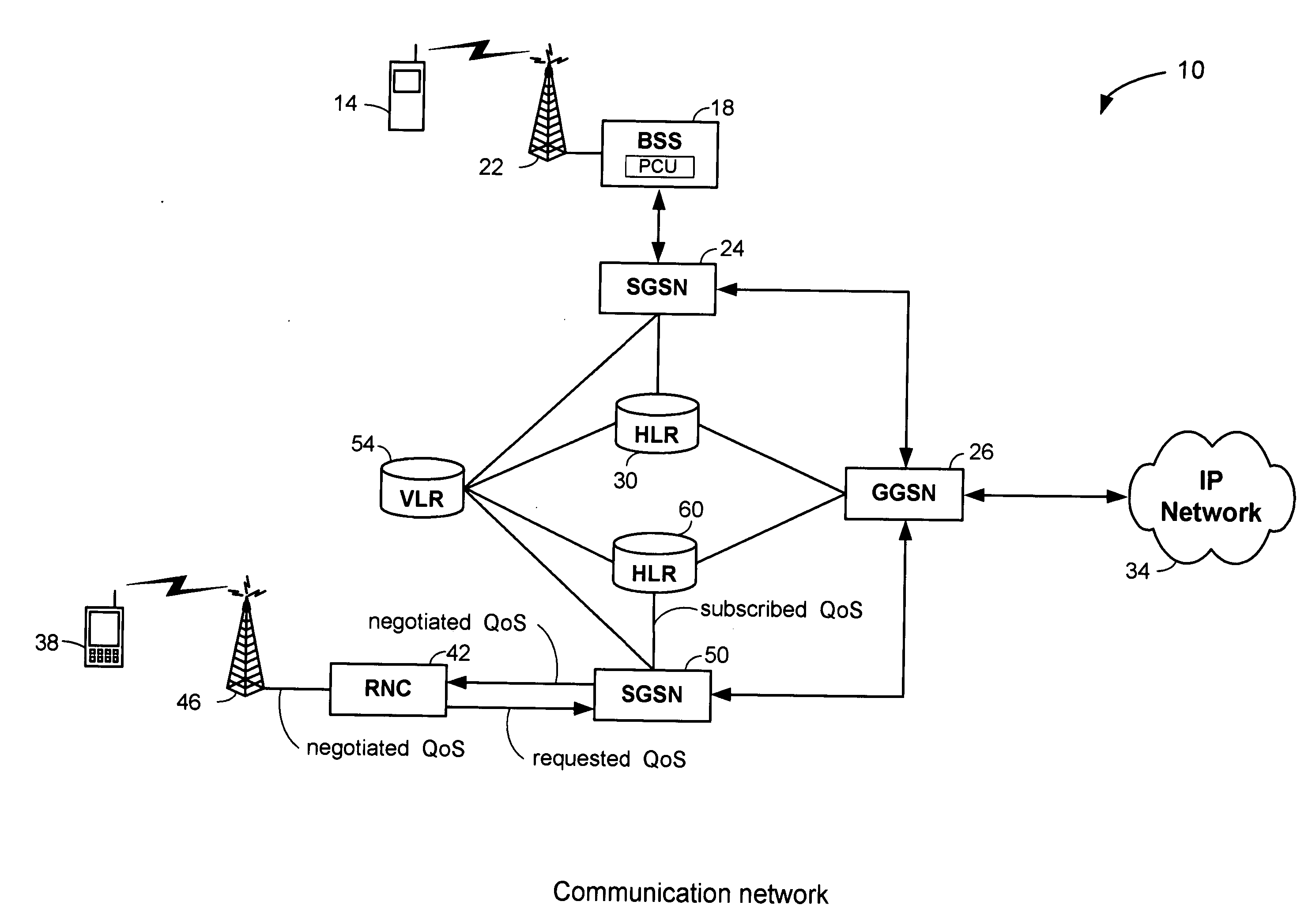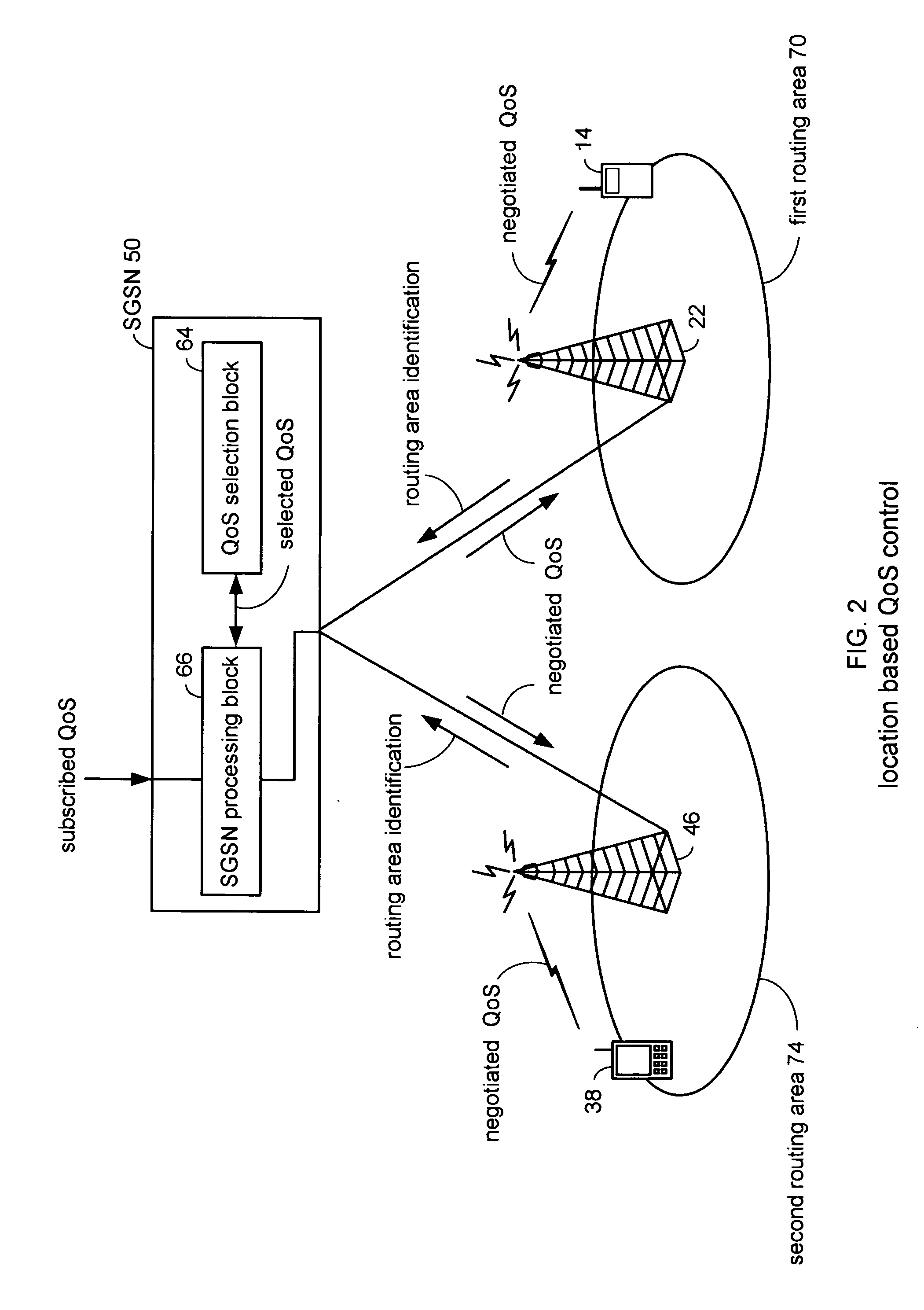Location based quality of service (QoS) control
a quality of service and location technology, applied in the field of wireless network quality of service provisioning, can solve the problems of limited subject to network congestion and available bandwidth
- Summary
- Abstract
- Description
- Claims
- Application Information
AI Technical Summary
Benefits of technology
Problems solved by technology
Method used
Image
Examples
Embodiment Construction
[0022]FIG. 1 is a functional block diagram of a communication network formed according to one embodiment of the present invention. The communication network shown generally at 10 includes a mobile terminal 14 that communicates within a GPRS / UMTS network. Mobile terminal 14 is a GPRS-capable and may also be voice-capable mobile terminal that communicates with the GPRS / UMTS network by way of base station system (BSS) 18 and tower 22. The BSS 18 includes a packet control unit (PCU) that separates the packet data for transmission to a serving GPRS support node (SGSN) by way of the Gb interface. Although shown as part of BSS 18, the PCU could be formed as a separate unit. The GPRS network includes SGSN 24 that is operably coupled to a gateway GPRS support node (GGSN) 26.
[0023] Additionally, a Home Location Register (HLR) 30, containing subscriber profile information for both GSM and UMTS networks, is operably coupled to provide the subscriber profile information to SGSN 24. The SGSN, su...
PUM
 Login to View More
Login to View More Abstract
Description
Claims
Application Information
 Login to View More
Login to View More - R&D
- Intellectual Property
- Life Sciences
- Materials
- Tech Scout
- Unparalleled Data Quality
- Higher Quality Content
- 60% Fewer Hallucinations
Browse by: Latest US Patents, China's latest patents, Technical Efficacy Thesaurus, Application Domain, Technology Topic, Popular Technical Reports.
© 2025 PatSnap. All rights reserved.Legal|Privacy policy|Modern Slavery Act Transparency Statement|Sitemap|About US| Contact US: help@patsnap.com



